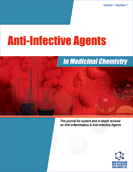Abstract
Lincomycin and its derivatives are antibiotics exhibiting biological activity against bacteria, especially Grampositive ones, and also protozoans. Lincomycin and its semi-synthetic chlorinated derivative clindamycin are widely used in clinical practice. Both antibiotics are bacteriostatic, inhibiting protein synthesis in sensitive bacteria, and they may even be bactericidal at higher concentrations that can still be reached in vivo. Clindamycin is usually more active than lincomycin in the treatment of bacterial infections, in particular those caused by anaerobic species; it can also be used for the treatment of important protozoal diseases, e.g. malaria, most effectively in combination with other antibiotic or nonantibiotic antimicrobials (primaquine, fosfidomycin, benzoyl peroxide). Resistance to lincomycin and clindamycin may be caused by methylation of 23S ribosomal RNA, modification of the antibiotics by specific enzymes or active efflux from the bacterial cell. In addition to the various medicinal applications and modes of microbial resistance to lincosamides, the review describes the chemical structures of lincosamide antibiotics and analytical procedures used for identification, separation and isolation of these compounds and their metabolites. The biosynthesis of lincomycin and related compounds and its genetic control are also briefly discussed.
Keywords: Lincomycin, clindamycin, lincosamide antibiotics, microbial resistance
 8
8





















